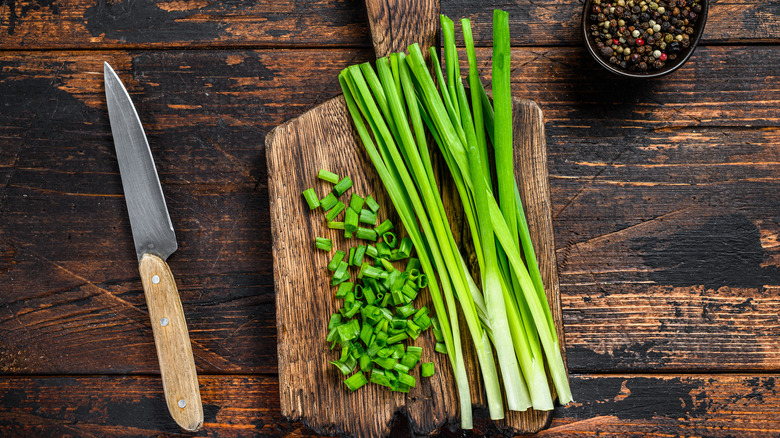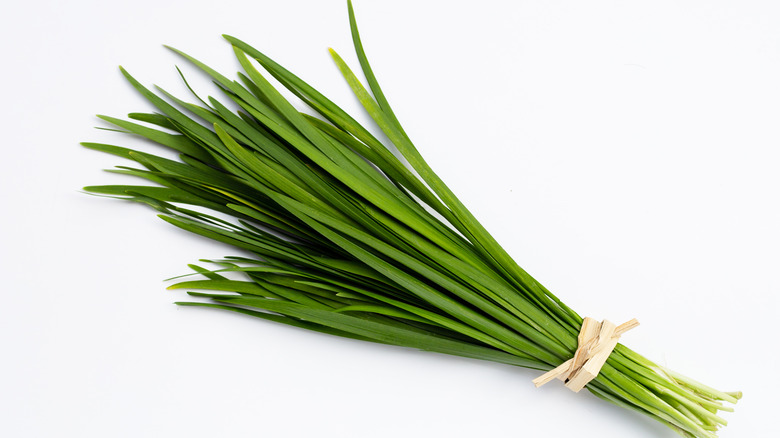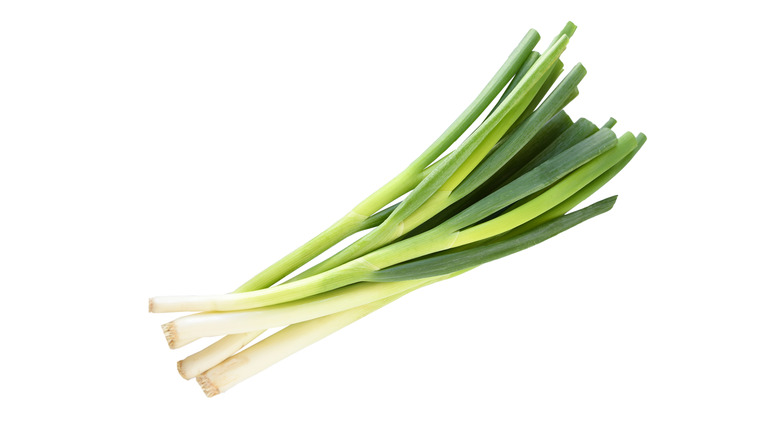Chives Vs Scallions: What's The Difference?
For those of us that don't work in restaurants and are not trained chefs, the cooking world and its specific terms and ingredients can be very confusing. For example, one person posted on r/Cooking and asked people to reveal what ingredients they commonly mix up. A few popular answers include parsley and cilantro, sugar and salt, baking soda and baking powder, nutmeg and cinnamon, flour and cornstarch, plantains and bananas, butternut squash and sweet potato, and paprika and cayenne pepper.
One trio of ingredients that also commonly get confused for one another are chives, scallions, and green onions, but there are a few important distinctions between two of them. According to the Auguste Escoffier School of Culinary Arts, scallions and green onions are different names for the same vegetable, so the real difference between scallions and green onions is nonexistent. However, the difference between chives and scallions is more notable.
What are chives?
According to MasterClass, scallions and chives are both members of the Allium genus, which includes onions, garlic, leeks, and shallots. The key difference between scallions and chives is their species. While there are a lot of variations, the most common species of chives is allium schoenoprasum. Auguste Escoffier School of Culinary Arts points out that chives are classified as an herb, are slimmer and flimsier than scallions, and are entirely green.
Chives have a light onion flavor, but they don't have a high heat tolerance and can become bitter if cooked too long; therefore, chives should be eaten raw. Because of their delicate flavor that won't take away from other aspects of a dish, chives are a great addition to dips, spreads, and butters, as well as a garnish for deviled eggs, baked or mashed potatoes, soups, stews, salads, and omelets. Here are some of the best ways to use chives.
What are scallions?
As mentioned earlier, scallions and chives are in the same family. There are also several species of scallions, but the most common is Allium cepa (via MasterClass). Per Auguste Escoffier School of Culinary Arts, scallions, aka green onions, are vegetables, and they are mostly green with white bulbs. Scallions have a very strong, prominent onion flavor and can be eaten raw or cooked at high temperatures (per MasterClass). Storing and keeping your scallions fresh is pretty easy, too.
Scallions are a very versatile onion and are used frequently in Asian dishes, including stir-fry. The white bulb of a scallion has the sharpest onion flavor so it's best to cook that part to tone it down a bit. The green part can also be cooked, especially in scones or biscuits, but it can also be used raw in dips and spreads.
MasterClass also notes that scallions and chives can be swapped for one another. However, be sure to use more chives than scallions in your recipe since the flavor of chives is less pronounced than that of scallions. The opposite is true when using scallions for chives; make sure you use fewer scallions than chives since they have a stronger flavor.


